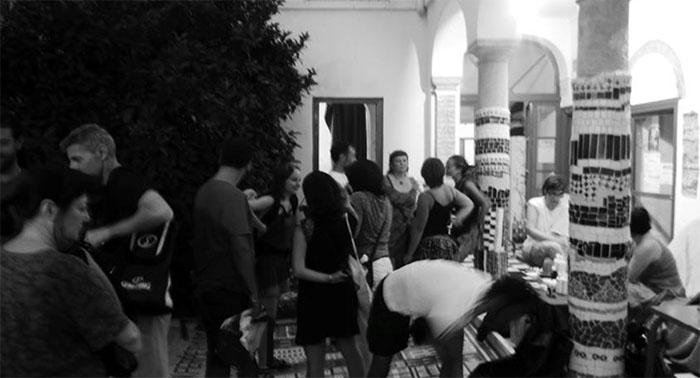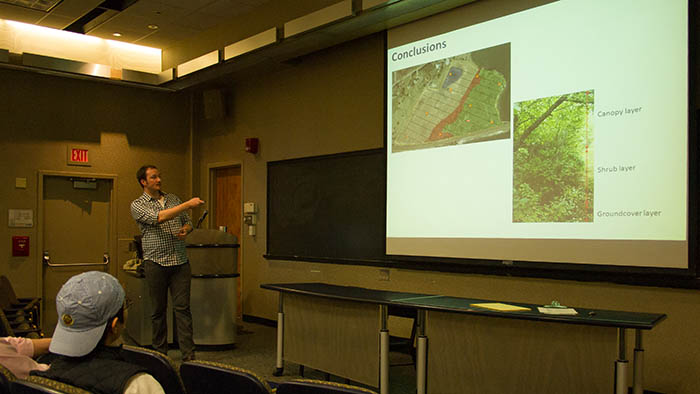Members of the Avalonia Land Conservancy and Trinity’s ENVS program spent Saturday morning at the Knox Preserve in Stonington, CT to unveil four interpretative signs that outline the major habitats of the Knox Preserve. the signs were designed by Eunice Kimm (’14) as part of her integrating experience. During her senior year Eunice worked closely with Drs. Cameron Douglass and Joan Morrison, identifying and drawing birds that are common at the preserve and designing the signs.

Eunice Kimm (’14) enjoying the sunset at Fimmvörðuháls in southern Iceland during our 2014 field trip to iceland.
The event started with lots of good food from the First and Last Bakery and a few short introductory statements by Beth Sullivan from the Avalonia Land Conservancy and Cameron Douglass from Trinity College. Beth thanked all the volunteers who help to maintain the preserve and came out at the crack of dawn to install the signs. Cameron told us about the ecological value of the preserve, the Conservancy’s efforts to combat invasive species and, and Connectiut’s unofficial state plant.
The unveiling took only seconds (I almost missed it), but Cameron kept us entertained by introducing us to the various habitats and the management challenges associated with each.
We then went on a short walk through the preserve, learning about the history of the site and the ongoing research performed by Cameron, Joan and their students.

Trinity crew with one of Eunice’s signs. Sarah, Emily, Cameron with Parker (class of ’36), Christoph (luring Parker with some coffee), and saintly Preston (who still acts surprisingly normal after spending weeks with Cameron’s all-female research crew)
You can learn more about the Avalonia Land Conservancy and the Knox Preserve by visiting the Conservancy’s website or reading Beth Sullivan’s blog. You can see Eunice’s signs for yourself by visiting the preserve and hiking the trails. Directions to the site are here – just don’t mess with Cameron’s flagging tape!























